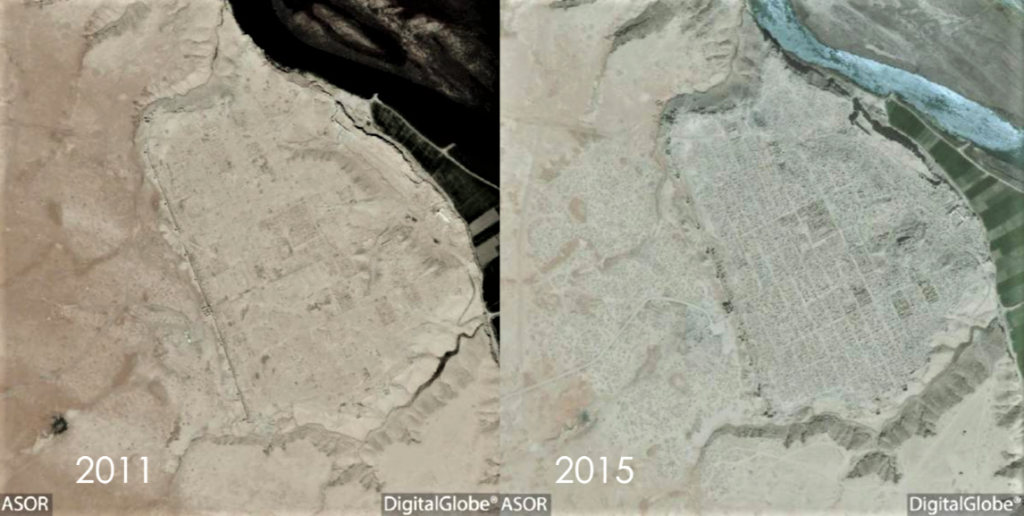Looting and the Loss of Heritage
Archaeological context is the relationship of an artifact to the other finds and features of a site. Controlled excavations try to record and preserve as much of an object’s context as possible. After excavation, artifacts are usually stored at a university, government agency, or museum.
But not all objects are uncovered by archaeologists. Many are recovered by looters looking to sell antiquities on the international market. Digging for profit tends to focus on retrieving individual items for sale and often uses methods that destroy context.
The pots in this exhibit may have been targets of commercial digging or looting, and by the time they reached the Museum, they were orphaned and anonymous, stripped of context. An antiquities dealer probably added the tags in the storage box dating them to between 3000 and 2500 BCE in order to pass them off as rarer and more valuable.
Though the pots were reportedly dug up in the 1930s, looting remains a serious threat to archaeological sites in the Middle East today. Decades of armed conflict have left national governments poorly equipped to protect cultural heritage, and they have created conditions of poverty and desperation that make looting an appealing option to many people. Satellite photos show important sites like Dura-Europos in Syria pockmarked with hundreds of looters’ pits.
Looted artifacts are now flooding the antiquities market, especially on sites like eBay, Amazon, and Facebook, where antiquities traffickers can sell pottery, small statues, or even mosaics for anywhere from a few hundred to several thousand dollars. Terrorist groups including ISIS frequently use this trade as an important source of revenue.
Dura-Europos, Syria

November 2016)
Aerial photos from before and after illegal digging, showing hundreds of looters’ pits dug since the start of the Syrian conflict.
Recovering the Past
As a result of looting and the international antiquities trade, more and more objects are bound to end up like the Lam Museum’s “Amlash” pottery: anonymous, untraceable, and devoid of archaeological context. For scholars of the ancient world, this represents a massive loss of knowledge.
But as this exhibit shows, even anonymous objects are not voiceless. Through careful study and research, we can at least start to bring out their hidden histories. How many more objects like these are now lying silent in boxes, waiting to tell their stories to whoever takes the time to listen?

